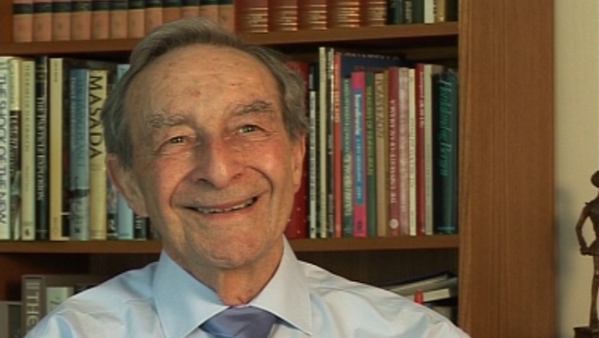NEXT STORY

How the Nazis destroyed northern Norway
RELATED STORIES

NEXT STORY

How the Nazis destroyed northern Norway
RELATED STORIES


|
Views | Duration | |
|---|---|---|---|
| 71. The surprising results of our boron trifluoride experiments | 56 | 02:42 | |
| 72. Addressing the points raised by my PhD research | 43 | 05:24 | |
| 73. Paul Dirac's inspiring lectures | 470 | 02:33 | |
| 74. Skiing in Norway for Easter vacation | 51 | 00:46 | |
| 75. The trip of a lifetime | 46 | 07:58 | |
| 76. Final year and post-doc in Cambridge | 54 | 02:41 | |
| 77. A great expedition to Lapland | 44 | 03:28 | |
| 78. 'You don't know about Norway's mosquitoes!' | 208 | 01:17 | |
| 79. Preparations for the Lapland expedition | 38 | 00:56 | |
| 80. The end of civilisation | 48 | 02:38 |


We went up on the coastal steamer and that took, I think, about five days to get up and then we saw the North Cape which is a wonderful... escarpment or cliff at the north of Europe. We saw huge glaciers on the way up, vast mountains, these deep fjords. It was beautiful scenery. Then we went down Porsanger Fjord down into the heart of Finnmarksvidda, took a bus to Kautokeino [sic] and that was the end of civilisation. Kautokeino [sic] was in those days a Lapp village. There was a Christian church there. I think it was an Orthodox Russian church actually, but it was a small white church. There was, interestingly enough, a folk museum of Lapp culture and their colourful garments and so forth and our first job was to negotiate with people in Kautokeino [sic] to have a Lapp with a canoe and an outboard motor to drive us up the river so that we didn’t have to walk the first part of the trip to a place where he could put us down and then we were on our own and we would have to walk across Lappland.
So we found a Lapp and we got boated up there and started off on our trip. The trip, as I say, was on a rough track. Occasionally it would cross a river but there was no bridge. The rivers were not large, at least the first ones that we came to were not large, but they were active streams. It was of course light for 24 hours in the day. The mosquitoes were true to form and I have to say, if I can be indelicate, that going to the loo out in the open with mosquitoes buzzing round your bottom was a tricky thing. It was a two-man or two-girl affair with one waving the mosquitoes away whilst the other one performed. So it was an interesting experience to be there to say the least.
Norman Greenwood (1925-2012) was born in Australia and graduated from Melbourne University before going to Cambridge. His wide-ranging research in inorganic and structural chemistry made major advances in the chemistry of boron hydrides and other main-group element compounds. He also pioneered the application of Mössbauer spectroscopy to problems in chemistry. He was a prolific writer and inspirational lecturer on chemical and educational themes, and held numerous visiting professorships throughout the world.
Title: The end of civilisation
Listeners: Brian Johnson
Professor Brian FG Johnson FRS, FRSE, FRS Chem, FAcad Eu, FAS. Professor of Inorganic Chemistry University of Edinburgh 1991-1995, Professor of Inorganic Chemistry University of Cambridge 1995-2005, Master Fitzwilliam College Cambridge 1999-2005. Research interests include studies of transition metal carbonyls, organometallic chemistry, nano- particles and homogeneous catalysis. Professor Johnson is the author of over 1000 research articles and papers.
Tags: Kautokeino, Norway, Porsanger Fjord, Porsangerfjorden, Finmarksvidda
Duration: 2 minutes, 38 seconds
Date story recorded: May 2011
Date story went live: 25 November 2011